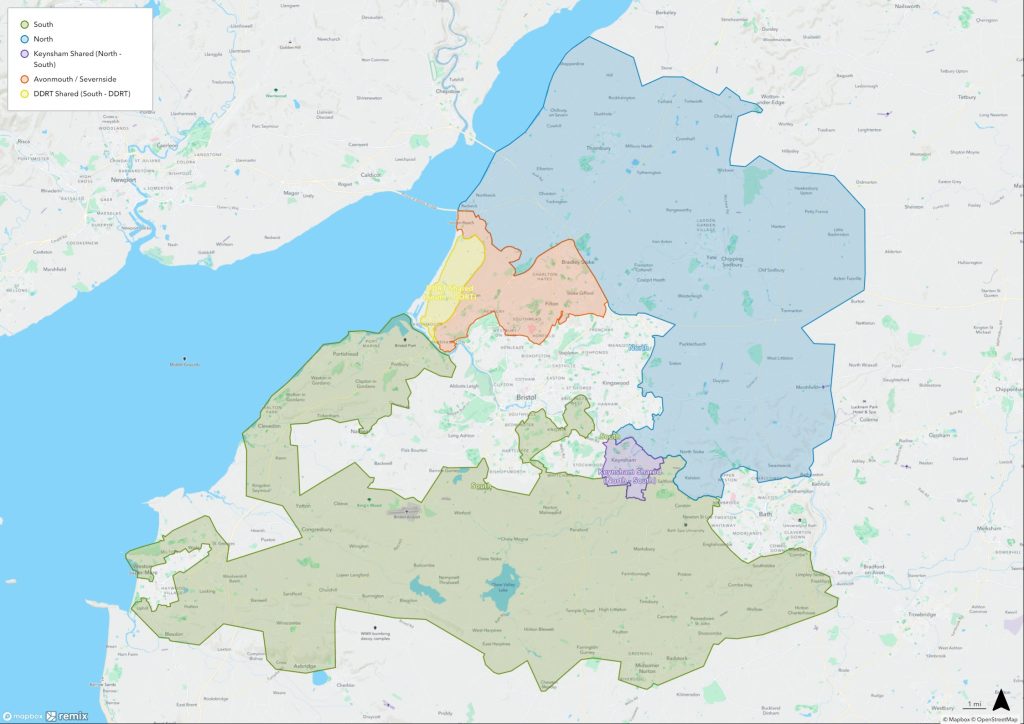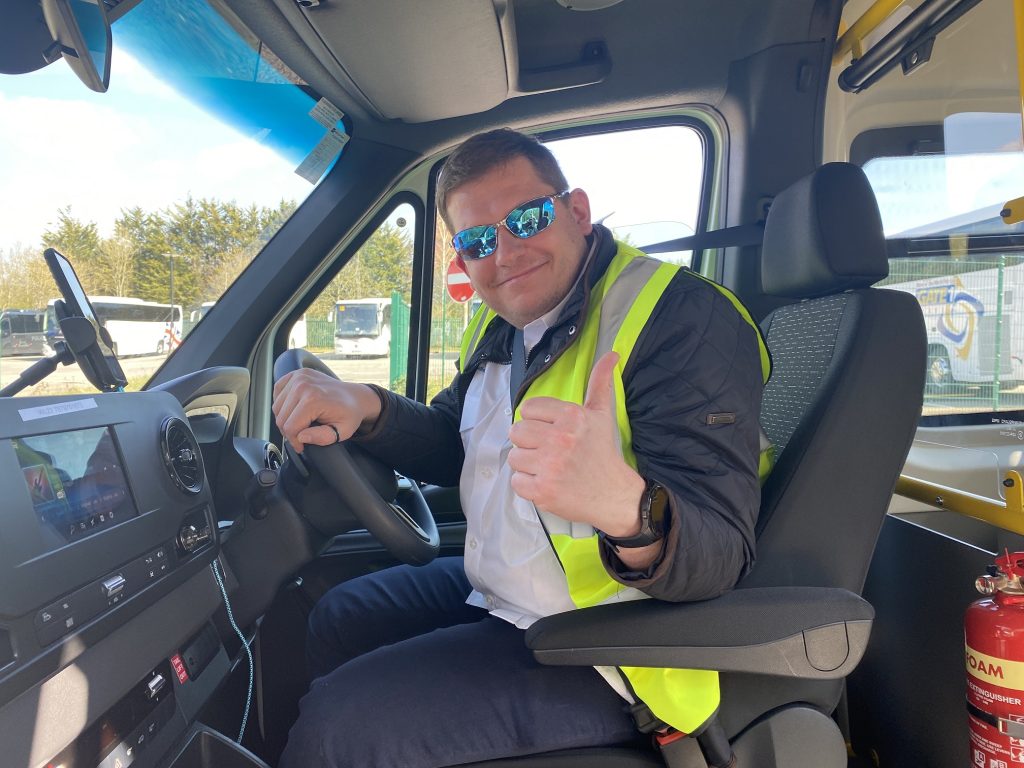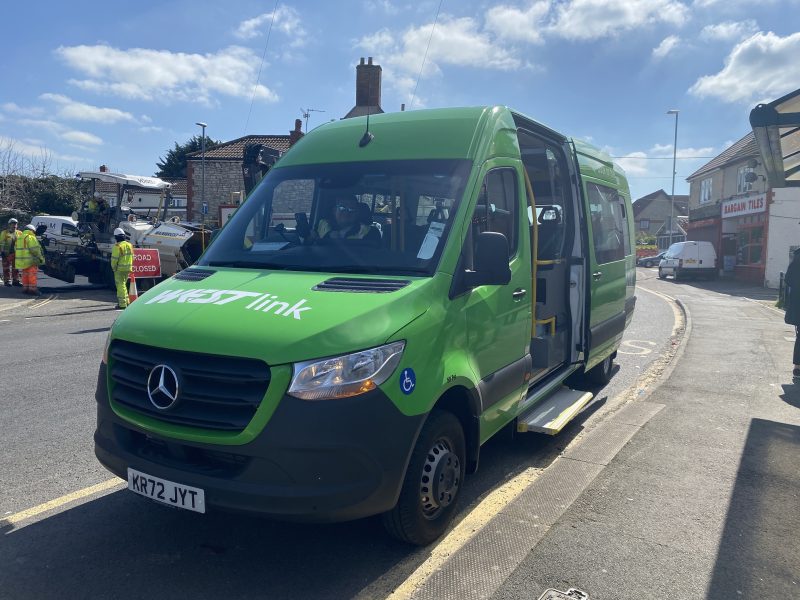By John Wimperis, Local Democracy Reporter: A new type of bus service launched in the West on Monday April 3 and I went to try it out.
The 30 WESTlink minibuses that are being rolled out in northern parts of Somerset, and some of Bristol and South Gloucestershire do not follow set routes or timetables, but plot different routes every time, going where people need to be picked up from to where they need to go.
It is a bold offer, funded by bus service improvement plan funding given to the West of England Combined Authority and North Somerset Council in order to develop new and innovative public transport solutions. But will it work?
The stakes for the new scheme were raised after the constituent councils of the West of England voted to cut their supported bus routes. The bus cuts, which mostly came into effect just as WESTlink launched, mean that for some areas such as rural North East Somerset, the new on demand has effectively replaced normal bus routes — although Metro Mayor Dan Norris insists it is not meant to be a replacement and says councils should continue to fund supported buses.

So, I decided to try out the new service on the day of launch and see if it could get me from Whitchurch, on the edge of Bristol, into Bath in time for a council meeting I was covering in my role as a local democracy reporter.
As most of Bath itself is not covered by WESTlink, I decided to get my minibus to Odd Down Park and Ride on the edge of the city so I could get the bus into the centre from there.
There are three ways to book a WESTlink minibus: on the app, on the website (westlink.app), or on the phone by calling 0117 457 8561.
I used the app, which has a map similar to other ride hailing apps. After choosing Odd Down as my destination, I was offered rides from a nearby bus stop in 11 minutes or 19 minutes. The app also told me I could get the newly-extended 172 bus instead.
I booked the first available WESTlink minibus and headed to the bus stop, the app now showing me where the bus was as it came to pick me up.
And right on schedule a notification popped up to tell me the minibus had arrived, giving me the van’s number plate and model — although the bright green WESTlink-branded minibuses are hard to miss, even though it was stuck in traffic a short way up the road.

The minibus had 15 seats in the back, and space for a wheelchair at the rear, all with bright WESTlink-green seatbelts and a stylized moquette.
Unlike standard buses there is nothing dividing the drivers cab from the passengers. I was only the third passenger so far, minibus driver Bart told me. He said: “I must say I like it so far. […] It’s more fun for me.”
Bart is enthusiastic about the scheme and moved to the area in order to drive for WESTlink.
As we got moving, the app switched to showing me the route we were taking to the park and ride, giving me an ETA of 2.11pm — a journey of just under 40 minutes.
It would take an hour and ten minutes to get from Whitchurch to the park and ride’s nearest bus stop on the 172, so WESTlink looked like it would be much faster — comparable almost to driving.
Bart said: “You just wonder how the Uber drivers are going to fare with us now.”

But WESTlink is still a bus designed to carry multiple passengers, not a taxi, and a short way into our journey Bart’s sat-nav started telling him to turn back around — someone else nearby had booked a WESTlink trip and the algorithm behind the network had sent our minibus to pick them up.
My ETA on the app quickly changed to 2.45pm as we headed into South Bristol to pick up the next passenger, Roger French, who runs a public transport blog and Bus and Train User and had come to Somerset to try out the new service.
He is sceptical about demand responsive transport schemes such as WESTlink. He said: “It doesn’t really serve its purpose.”
Mr French had been using WESTlink buses to get around South Gloucestershire all day and said I was the first other passenger he had seen on one of the buses. He said: “It’s all good on day one because nobody’s using it.”

My ETA on the app went up and down as we hit traffic and, in the end, the bus arrived to drop me at Odd Down Park and Ride at 2.48pm, an hour and ten minutes after I had got on the minibus — almost exactly as long as it would have taken to get there on the bus.
But my journey was not finished. As Bath itself, along with Weston-super-Mare and most of Bristol, is not covered by WESTlink, I had to catch the park and ride bus to actually get into the city centre and to my council meeting.
The service is intended to link up rural areas poorly served by public transport, and to connect people in remote areas to mainline public transport routes where they can get on a frequent bus.
And this was my thinking behind going to the park and ride, where buses are frequent, and I was able to get into Bath in plenty of time to get to the council meeting I was covering, where councillors debated the selling off of an office block in Midsomer Norton.

My journey was not the most direct, but it was pleasant and — with the pricing in line with the £2 bus fare — an affordable way to go so far.
But this was a journey on day one, with only a handful of people using the service. Journeys might make more detours as more people learn about the service and request rides, but if more people are booking their travel in advance, routes may be calculated with fewer unpredictable diversions.
As Bart told me: “Everyone I have had so far today has been happy, but we will see how it goes.”
Local Democracy Reporters
The journalists are funded by the BBC as part of its latest Charter commitment, but are employed by regional news organisations.
A total of 165 reporters are allocated to news organisations in England, Scotland, Wales and Northern Ireland including Bath Voice.
These organisations range from television and radio stations to online media companies and established regional newspaper groups.
Local Democracy Reporters cover top-tier local authorities, second-tier local authorities and other public service organisations.
Stories written by the democracy reporters are shared with more than 1,000 media titles and outlets that have signed up to be part of the Local News Partnerships scheme.
To be awarded the democracy reporter contracts, the successful news organisations had to pass stringent criteria which included financial standing and a strong track record of relevant journalism in the area they were applying to cover.
The award decisions were made by senior editorial BBC figures.
Bath Voice Monthly Newspaper is distributed free to thousands of homes and some supermarkets – distributed from the first of the month. Harry Mottram is the News Editor
Email him at news@bathvoice.co.uk
Bath website: https://bathvoice.co.uk/news/
Bath Facebook: https://tinyurl.com/bdtf2kep
Also on Twitter: https://twitter.com/bath_voice
Read the newspaper online at :https://issuu.com/bathvoice
To advertise to thousands of Bathonians call Erica on 07402 441485 or email her on erica@bathvoice.co.uk
Harry Mottram is a freelance journalist. Follow him on Facebook, LinkedIn, Twitter, Instagram, YouTube etc
Email:harryfmottram@gmail.com
Website:www.harrymottram.co.uk
Mobile: 07789 864769


